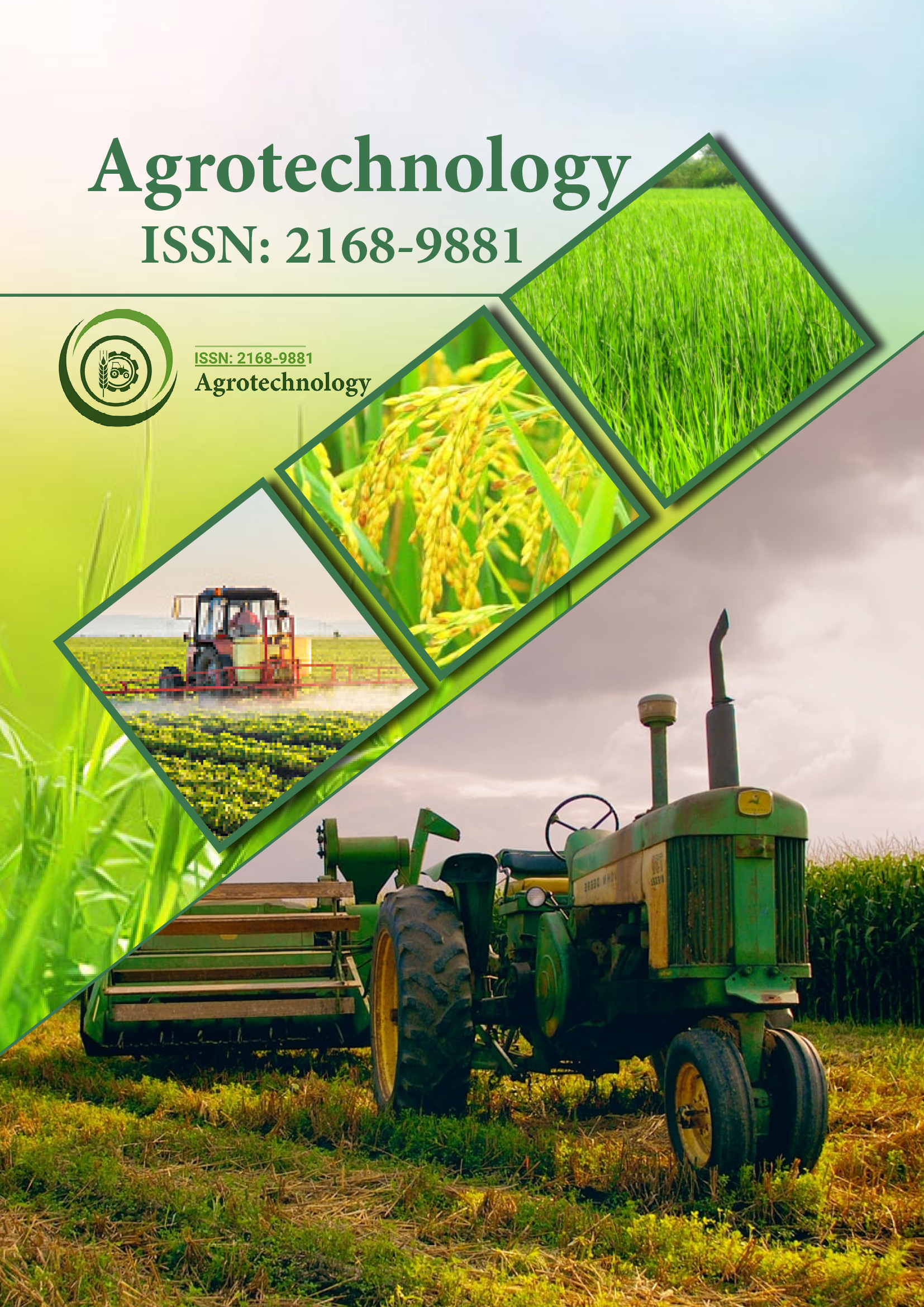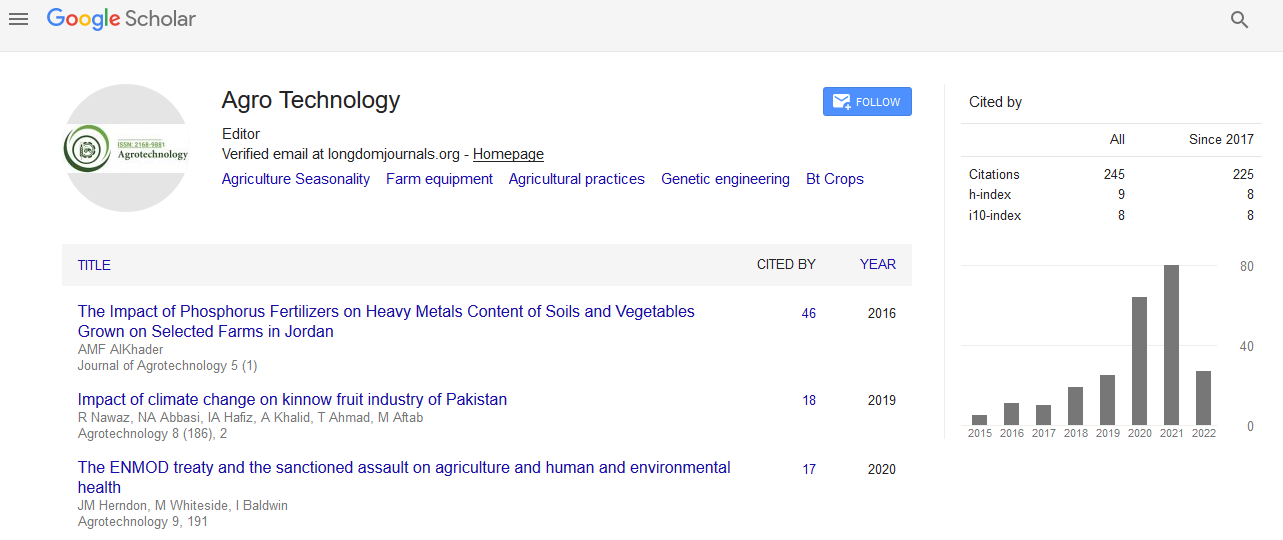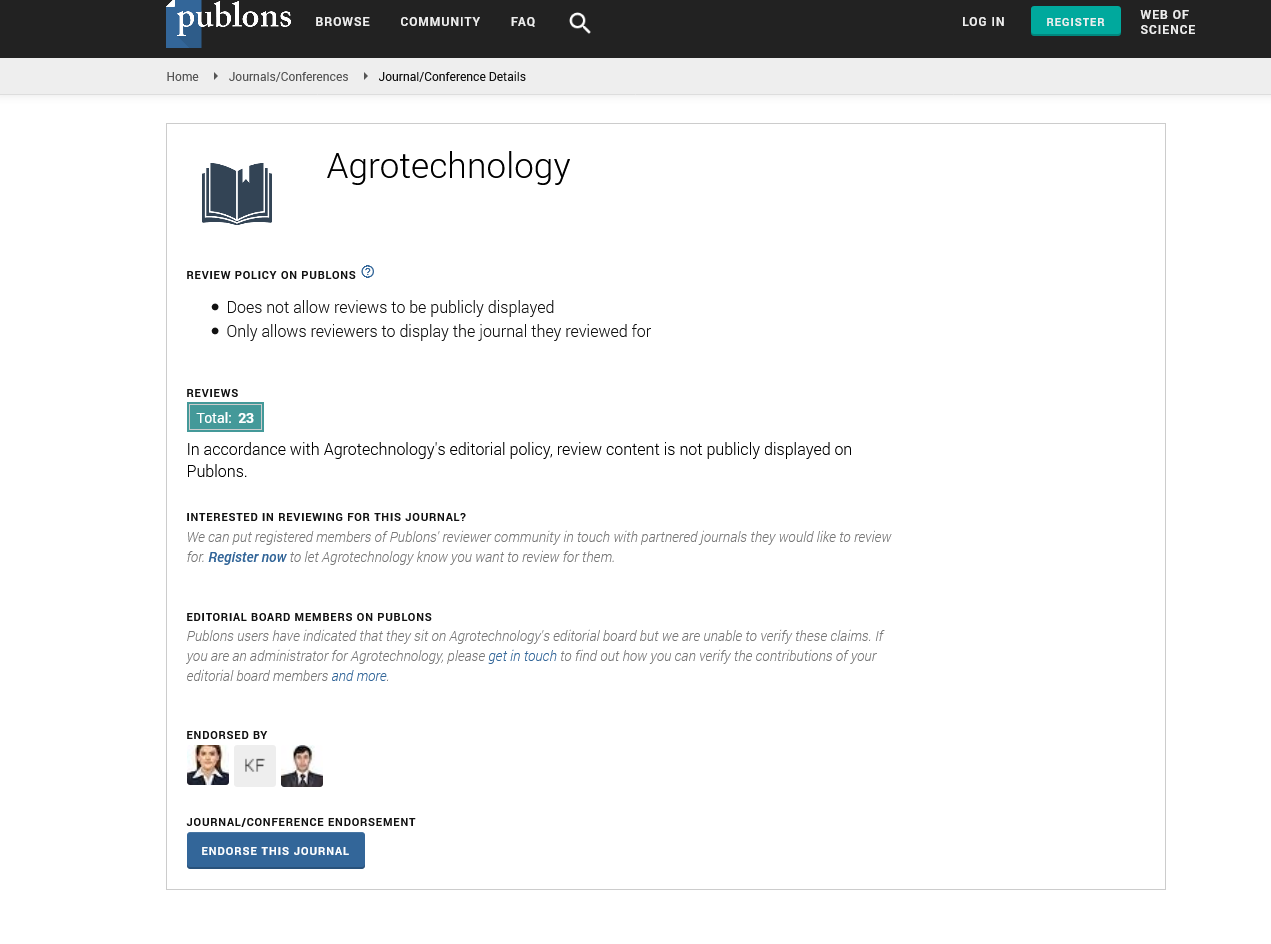Indexed In
- Open J Gate
- Genamics JournalSeek
- Academic Keys
- ResearchBible
- Cosmos IF
- Access to Global Online Research in Agriculture (AGORA)
- Electronic Journals Library
- RefSeek
- Directory of Research Journal Indexing (DRJI)
- Hamdard University
- EBSCO A-Z
- OCLC- WorldCat
- Scholarsteer
- SWB online catalog
- Virtual Library of Biology (vifabio)
- Publons
- Geneva Foundation for Medical Education and Research
- Euro Pub
- Google Scholar
Useful Links
Share This Page
Journal Flyer

Open Access Journals
- Agri and Aquaculture
- Biochemistry
- Bioinformatics & Systems Biology
- Business & Management
- Chemistry
- Clinical Sciences
- Engineering
- Food & Nutrition
- General Science
- Genetics & Molecular Biology
- Immunology & Microbiology
- Medical Sciences
- Neuroscience & Psychology
- Nursing & Health Care
- Pharmaceutical Sciences
Perspective - (2025) Volume 14, Issue 1
Long-Term Benefits of Organic Farming on Red Soil Quality and Microbial Diversity
Peter Caldwell*Received: 19-Feb-2025, Manuscript No. AGT-25-28749; Editor assigned: 21-Feb-2025, Pre QC No. AGT-25-28749 (PQ); Reviewed: 07-Mar-2025, QC No. AGT-25-28749; Revised: 14-Mar-2025, Manuscript No. AGT-25-28749 (R); Published: 21-Mar-2025, DOI: 10.35248/2168-9891.25.14.404
Description
In recent years, organic farming has gained widespread recognition as a sustainable alternative to conventional agricultural practices. The long-term adoption of organic farming methods has been shown to improve soil quality, enhance biodiversity and promote environmental sustainability. Among the various benefits of organic farming, its impact on soil quality and microbial diversity in subtropical regions, especially those with red soils, is particularly noteworthy. Red soils, which are prevalent in subtropical climates, often face challenges such as low fertility, poor water retention and high acidity, making them susceptible to degradation. Organic farming, with its emphasis on sustainable practices, provides a potential solution to improve these soils while promoting greater microbial diversity.
Red soils, commonly found in tropical and subtropical regions, are characterized by their high iron oxide content, which imparts a reddish color. While these soils are often rich in minerals, they can be deficient in essential nutrients such as nitrogen, phosphorus and potassium. The low organic matter content, poor cation exchange capacity and relatively low microbial diversity are typical features of red soils, particularly in regions where intensive conventional farming practices have depleted soil health. The use of chemical fertilizers and pesticides in conventional farming often exacerbates soil degradation, leading to a decline in microbial activity and a loss of soil structure. This creates a vicious cycle of declining soil fertility and reduced agricultural productivity.
In contrast, organic farming systems emphasize the use of natural inputs such as compost, green manure, crop rotation and cover cropping to maintain soil fertility and health. These practices help to improve the organic matter content of the soil, which enhances its structure, water-holding capacity and nutrient availability. Over time, the application of organic amendments leads to the development of a more fertile and stable soil environment, capable of supporting higher crop yields without the need for synthetic fertilizers. The long-term benefits of organic farming on soil quality are particularly evident in subtropical regions where red soils dominate.
Studies have shown that long-term organic farming can significantly improve the physical and chemical properties of red soils. Organic amendments increase the soil’s organic carbon content, which plays a significant role in enhancing soil aggregation, reducing erosion and improving water retention. Additionally, organic farming can help to balance the pH levels of red soils, which are often acidic in nature. The increased organic matter content in the soil also promotes the cycling of essential nutrients, making them more available to plants. This leads to improved soil fertility and greater crop productivity in the long run.
One of the most significant benefits of organic farming on red soils is its impact on soil microbial diversity. The microorganisms in the soil, including bacteria, fungi and protozoa, play a critical role in nutrient cycling, organic matter decomposition and plant health. In conventional farming systems, the use of synthetic chemicals can disrupt microbial communities, leading to a reduction in microbial diversity and activity. Organic farming, on the other hand, fosters a more diverse and resilient microbial community by providing a variety of organic substrates for microorganisms to feed on. This results in increased microbial biomass and activity, which enhances soil health and supports plant growth.
Long-term organic farming has been shown to increase the diversity of soil microbes in red soils, with studies indicating higher numbers of beneficial microorganisms such as nitrogen-fixing bacteria and mycorrhizal fungi. These microorganisms form symbiotic relationships with plants, helping them to access nutrients such as nitrogen, phosphorus and water more efficiently. The improved microbial diversity also enhances the soil’s ability to suppress soil-related pathogens and pests, reducing the need for chemical pesticides and contributing to more sustainable farming practices.
In conclusion, long-term organic farming provides a potential pathway for improving the quality of red soils and enhancing microbial diversity in subtropical regions. Through sustainable practices that promote soil health, organic farming can restore soil fertility, increase crop yields and support biodiversity. While challenges remain in the widespread adoption of organic farming, the evidence suggests that its benefits in terms of soil quality and microbial diversity make it a significant tool for sustainable agriculture in subtropical regions.
Citation: Caldwell P (2025) Long-Term Benefits of Organic Farming on Red Soil Quality and Microbial Diversity. Agrotechnology. 14:404.
Copyright: © 2025 Caldwell P. This is an open access article distributed under the terms of the Creative Commons Attribution License, which permits unrestricted use, distribution, and reproduction in any medium, provided the original author and source are credited.


